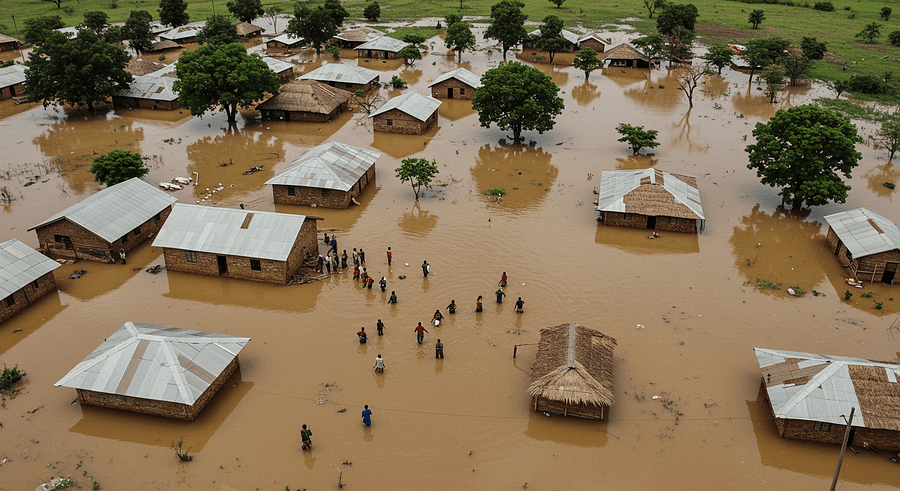
In recent years, Africa has been grappling with an escalating crisis: the impact of climate change-induced flooding on public health. The Healthy Africans Platform and the National University of Lesotho’s recent study shed light on how these floods are not only causing immediate destruction but also leading to a surge in water-related diseases and malnutrition across the continent.
The Problem: Flooding and Disease
Climate change has altered weather patterns, leading to more frequent and intense flooding events. These floods contaminate water sources, providing a breeding ground for waterborne pathogens. As a result, diseases such as cholera, typhoid, and diarrheal illnesses are on the rise. Additionally, stagnant water from floods creates ideal conditions for mosquito proliferation, thereby increasing the incidence of malaria and other vector-borne diseases.
A stark example is the 2022 flooding in Nigeria, which affected over 3 million people and led to more than 10,000 reported cases of cholera. Similarly, Mozambique’s Tropical Storm Ana in the same year caused widespread flooding, followed by a 30% increase in malaria cases. In Lesotho, the 2021 floods were associated with a 20% rise in child malnutrition rates in affected districts.
The Ripple Effect: Malnutrition
Beyond the immediate health threats from disease, flooding also disrupts agricultural activities, leading to food shortages and increased malnutrition. When fields are flooded, crops are destroyed, and farmers lose their livelihoods, resulting in food scarcity and price hikes. This situation is particularly dire for children and pregnant women, who are more vulnerable to the effects of malnutrition.
Malnutrition not only weakens the immune system, making individuals more susceptible to diseases, but it also has long-term impacts on physical and cognitive development. The study projects that by 2050, climate-related issues could lead to 250,000 annual deaths in Africa (WHO, 2022), with many linked to the combined effects of disease and malnutrition.
Addressing the Crisis: Recommendations
To mitigate these impacts, the study proposes:
- Early Warning Systems: Enhancing weather forecasting and early warning systems to allow for timely evacuations and preparedness measures.
- Water and Sanitation: Investing in robust water and sanitation infrastructure to prevent water contamination and ensure access to clean water.
- Climate-Resilient Agriculture: Promoting agricultural practices that are resilient to flooding and other climate change effects, such as crop diversification and improved drainage systems.
- Health Preparedness: Strengthening health systems with trained personnel and adequate supplies in flood-prone areas to handle disease outbreaks and malnutrition cases.
- Community Education: Engaging communities through education and awareness programs to prepare them for flood events and teach them how to prevent disease transmission and manage food resources.
Practical Solutions: Portable Water Pumps
One practical tool in this fight is the use of portable water pumps. These devices can help manage floodwater by draining excess water and can also be used to supply clean water to affected areas. A recommended product is available on Amazon at https://amzn.to/3DSVY9x, offering an efficient and durable solution for emergencies. This can be crucial in mitigating the effects of flooding, ensuring communities have access to clean water and reducing the risk of water-related diseases.
Join the Fight: PowerAfrika’s Call to Action
To stay informed and contribute to the movement for African resilience, sign up at https://powerafrika.com/rename-kotoka-airport. Together, we can build a future where Africa is equipped to withstand the challenges of climate change.
